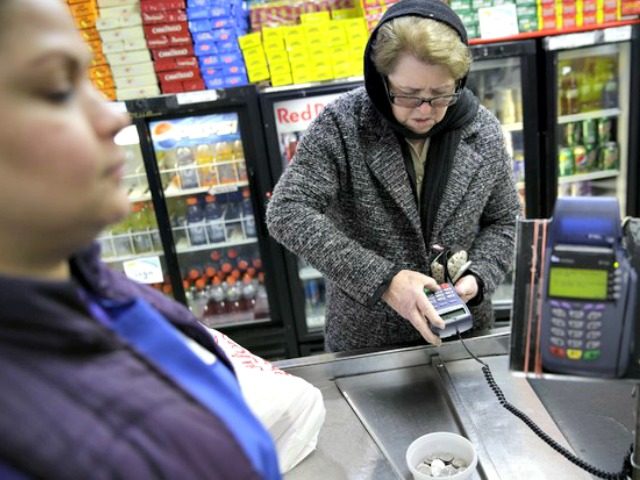A single-digit error rate might look good on paper, but for federal programs with budgets hovering around 70 billion even a relatively low improper payment rate has high dollar consequences.
A Government Accountability Office report released Wednesday reveals that the improper food stamp — or Supplemental Nutrition Assistance Program (SNAP) — payments made in fiscal year 2014 totaled $2.6 billion, or 3.66 percent of all payments. The report reads:
[F]or the most recent 10 years for which there are SNAP improper payment rate estimates available (for benefits paid in fiscal years 2005–2014), the national SNAP improper payment rate, combining both overpayments and underpayments, has declined or stayed the same in all but fiscal year 2014. For benefits paid in fiscal year 2014—the most recent year for which data are available—the rate increased to 3.66 percent from a low of 3.20 percent in fiscal year 2013.
While the error rate appears low, the billion dollar consequences mean that the Office of Management and Budget (OMB) has designated food stamps as a high-error program.
“We have reported that Medicaid, [Supplemental Security Income], and the [Earned Income Tax Credit], together with SNAP, comprise almost two-thirds of federal low-income obligations,” GAO explains. “These programs for low-income individuals, along with SNAP, are included in the federal government’s Payment Accuracy website list of programs with high improper payments reported to OMB.”
As GAO details, SNAP improper payments are due to both administrative and recipient error or fraud. In FY 2013, the Department of Agriculture (USDA), the agency that administers the program, estimated that 62.44 percent of errors were due to errors by state agencies and 37.27 percent were errors or fraud attributable to recipients.
“According to a September 2012 USDA [Office of Inspector General] report, the magnitude of program abuse due to recipient fraud is unknown because states do not have uniform ways of compiling the data that would provide such information,” the report reads.
Specifically, the accountability agency found that states’ varying food stamp policies and improper payment calculation methodology had an impact on the error rates. GAO reports:
For example, when states adopted available policy flexibilities that simplified or lessened participant reporting requirements, these changes reduced the opportunity for error and led to a decline in the improper payment rate, according to a USDA study. Conversely, other changes may have led to an increase in the improper payment rate. USDA cited the change from only counting errors over $50 in the rate to counting all errors over $37 as a key factor in an increase in the rate in fiscal year 2014.
Additionally, while USDA and the states GAO sampled have made efforts to combat food stamp abuse there remain limitations, according to GAO.
“[A]lthough USDA had increased its oversight of state anti-fraud activities since fiscal year 2011, GAO found that USDA did not have consistent and reliable data on states’ activities because its reporting guidance lacked specificity,” the report reads. “This limited USDA’s ability to monitor states and find more effective ways to combat recipient fraud.”

COMMENTS
Please let us know if you're having issues with commenting.